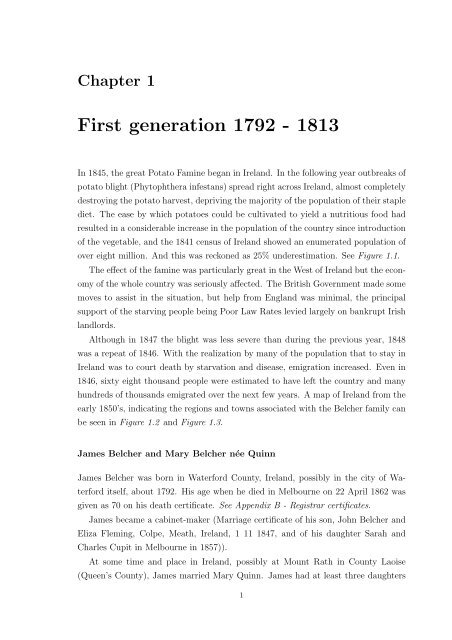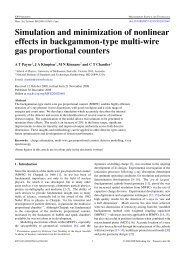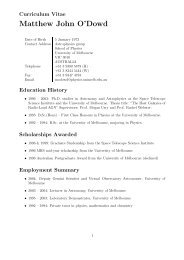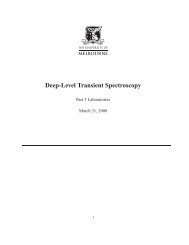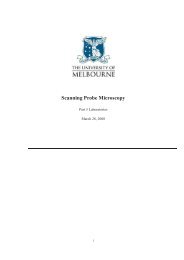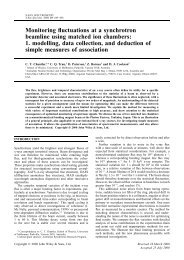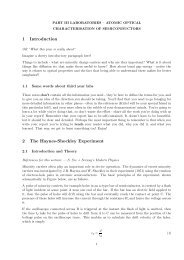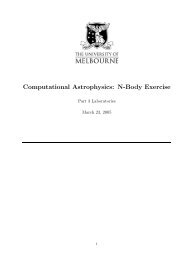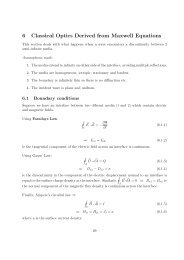the family of james belcher of waterford, ireland - University of ...
the family of james belcher of waterford, ireland - University of ...
the family of james belcher of waterford, ireland - University of ...
Create successful ePaper yourself
Turn your PDF publications into a flip-book with our unique Google optimized e-Paper software.
Chapter 1<br />
First generation 1792 - 1813<br />
In 1845, <strong>the</strong> great Potato Famine began in Ireland. In <strong>the</strong> following year outbreaks <strong>of</strong><br />
potato blight (Phytoph<strong>the</strong>ra infestans) spread right across Ireland, almost completely<br />
destroying <strong>the</strong> potato harvest, depriving <strong>the</strong> majority <strong>of</strong> <strong>the</strong> population <strong>of</strong> <strong>the</strong>ir staple<br />
diet. The ease by which potatoes could be cultivated to yield a nutritious food had<br />
resulted in a considerable increase in <strong>the</strong> population <strong>of</strong> <strong>the</strong> country since introduction<br />
<strong>of</strong> <strong>the</strong> vegetable, and <strong>the</strong> 1841 census <strong>of</strong> Ireland showed an enumerated population <strong>of</strong><br />
over eight million. And this was reckoned as 25% underestimation. See Figure 1.1.<br />
The effect <strong>of</strong> <strong>the</strong> famine was particularly great in <strong>the</strong> West <strong>of</strong> Ireland but <strong>the</strong> economy<br />
<strong>of</strong> <strong>the</strong> whole country was seriously affected. The British Government made some<br />
moves to assist in <strong>the</strong> situation, but help from England was minimal, <strong>the</strong> principal<br />
support <strong>of</strong> <strong>the</strong> starving people being Poor Law Rates levied largely on bankrupt Irish<br />
landlords.<br />
Although in 1847 <strong>the</strong> blight was less severe than during <strong>the</strong> previous year, 1848<br />
was a repeat <strong>of</strong> 1846. With <strong>the</strong> realization by many <strong>of</strong> <strong>the</strong> population that to stay in<br />
Ireland was to court death by starvation and disease, emigration increased. Even in<br />
1846, sixty eight thousand people were estimated to have left <strong>the</strong> country and many<br />
hundreds <strong>of</strong> thousands emigrated over <strong>the</strong> next few years. A map <strong>of</strong> Ireland from <strong>the</strong><br />
early 1850’s, indicating <strong>the</strong> regions and towns associated with <strong>the</strong> Belcher <strong>family</strong> can<br />
be seen in Figure 1.2 and Figure 1.3.<br />
James Belcher and Mary Belcher née Quinn<br />
James Belcher was born in Waterford County, Ireland, possibly in <strong>the</strong> city <strong>of</strong> Waterford<br />
itself, about 1792. His age when he died in Melbourne on 22 April 1862 was<br />
given as 70 on his death certificate. See Appendix B - Registrar certificates.<br />
James became a cabinet-maker (Marriage certificate <strong>of</strong> his son, John Belcher and<br />
Eliza Fleming, Colpe, Meath, Ireland, 1 11 1847, and <strong>of</strong> his daughter Sarah and<br />
Charles Cupit in Melbourne in 1857)).<br />
At some time and place in Ireland, possibly at Mount Rath in County Laoise<br />
(Queen’s County), James married Mary Quinn. James had at least three daughters<br />
1


